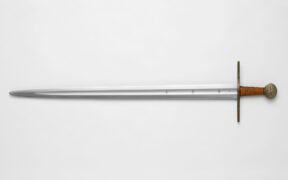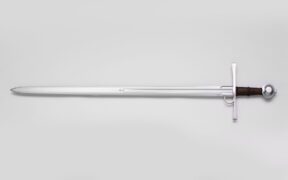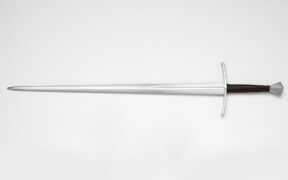Our content features commercial links to our products, committed to transparent, unbiased, and informed editorial recommendations. Learn More
Oakeshott Type XXII: The Final Sword in Oakeshott’s Typology
NO AI USED This Article has been written and edited by our team with no help of the AI
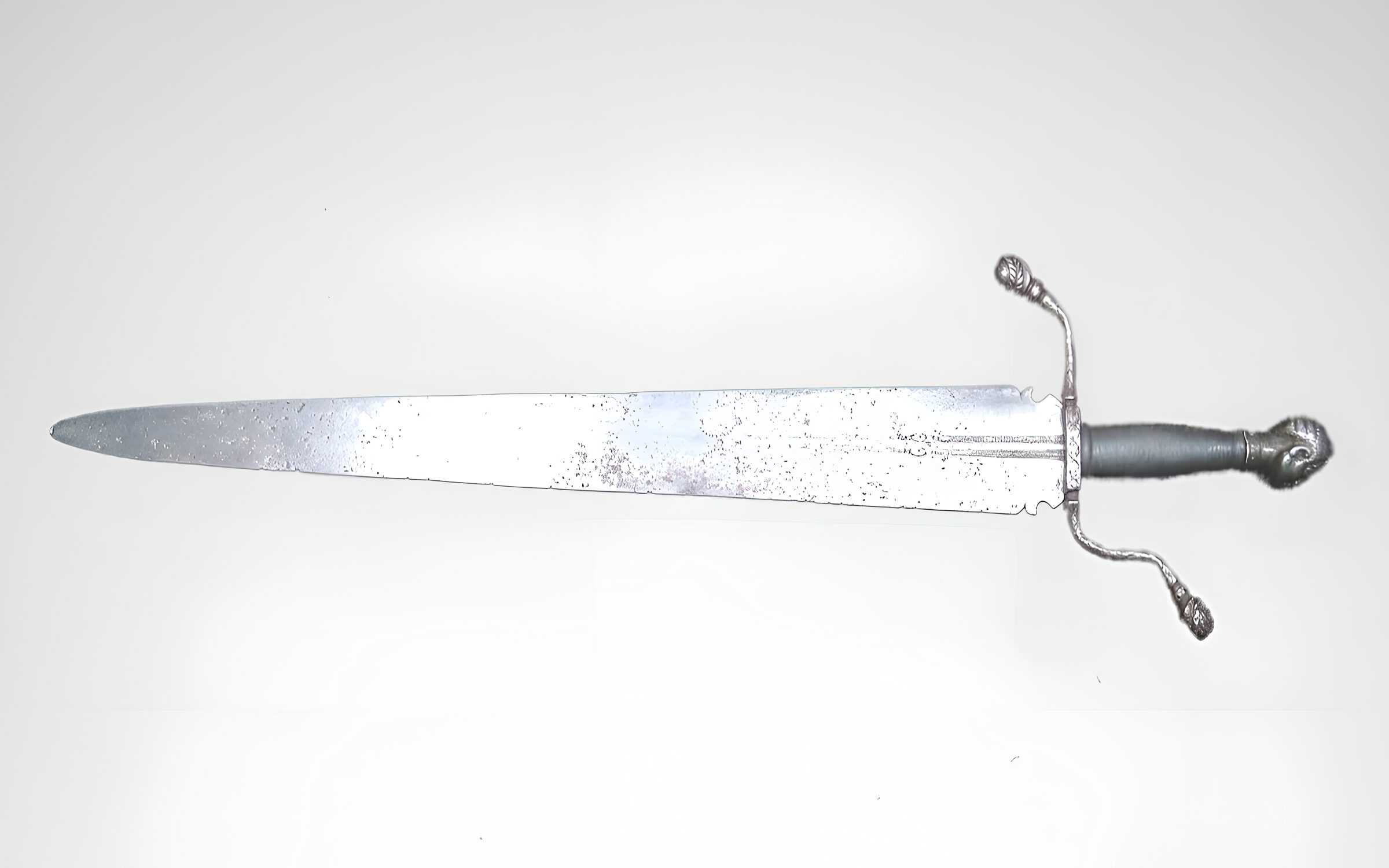
The Oakeshott type XXII is the last double-edged sword group in Oakeshott’s Typology and the last medieval sword in the group of blades intended to battle plate armor. It was a transitional sword design that took many elements of previous Oakeshott types with implementations of some later Renaissance sophisticated models.
Ronald Ewart Oakeshott was a British illustrator and amateur historian who profoundly studied European medieval arms and armor. His research spanned more than half a century, resulting in the creation of one of the best typologies and classification systems for European medieval double-edged swords. It consists of 13 groups from the Early Middle Ages through the beginning of the Renaissance.
In this article, we will look at the last group of this typology, the Oakeshott type XXII. We will start by examining its defining traits and explain how they were best put to use. Then, we will delve into its history and present historical antiques still preserved in museums and private collections today.
Characteristics of Type XXII Swords

The characteristics of type XXII swords are similar to other previous Oakeshott types. The smaller fullers near the hilt are its strongest unique trait, making it a category of its own. It blends earlier medieval cut and thrust types of swords and later Renaissance decorative and ceremonial types of blades.
Blade

The blade of the type XXII is straight and double-edged with a hexagonal or flattened diamond cross-section. Its profile is wide near the hilt with a gradual light taper. This taper extends throughout the entire length of the blade and ends with a rounded aesthetic before turning into an acute tip. The blade of XXII swords was mostly flat, with a small exception from the fuller in the center.
The fuller is what made this type stand out as its own category, as described by Oakeshott. Type XXII blades have very small fullers, only about 1/3 of the blade’s length, and even shorter in some cases. They are usually double with a pronounced rib or bulge in their center and go in pairs. The tang underneath the blade is rectangular in design.
The blades of the type XXII are very close to those of the previous XVIII and type XXI, which was influenced by the civilian Cinquedea dagger. Type XXII blades can also be decorated with etchings, inlays, and precious gems. Some of the blade examples feature a baselard, which was unnoticed by Oakeshott and was not its defining feature.
Hilt (Guard and Pommel)

Type XXII hilts often have a one-handed handle, similar to the Oakeshott type XXI, but some can be massive two-handed. Their crossguards were simple and straight in design, while some could have complex Renaissance-like models, such as a curved crossguard with bent terminals or quillons toward the blade, which are rolled over. They can also feature a more pronounced culp in the center.
The pommels could vary in fashion but were similar to the three main pommel designs frequented on the type XXI sword. Usually, they are seen with the Cinquedea pommel type in the letter U. Some have rounded pommels, and others feature angular form or disc shape with convex or chamfered edges.
Size and Weight

There aren’t many surviving examples of type XXII swords, and the ones that do exist can be the size of a typical 38-inch blade, a smaller dagger-like weapon, or an oversized massive sword. This is why their weight can vary depending on their length proportions and intended purpose. A common weight is 2.2 to 4.4 lbs (1 to 2 kg).
The size of this type can vary depending on the sword’s function, whether it was to be used for ceremonies or carried in everyday life. The average blade length for a type XXII was between 26 to 40 inches (66 to 101 cm) with a hilt length of around 3.5 to six inches (9 to 15 cm), making its overall length around 38 inches (96 cm).
Uses for Type XXII Swords
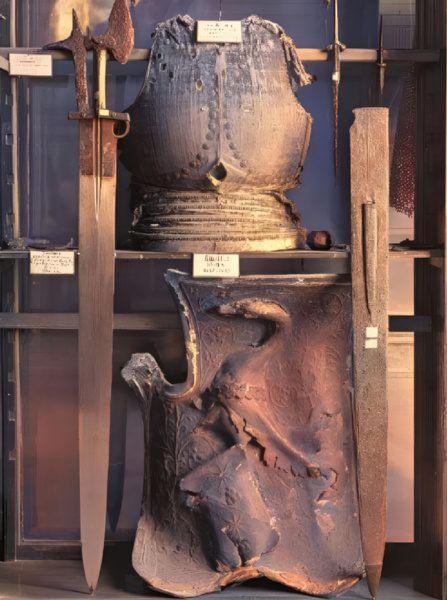
The design of the type XXII corresponds much to the XVIIIc type of sword, which could easily make it a cut-and-thrust type of weapon. Its size makes it primarily a one-handed tool, emphasizing much more on the cut, like the Cinquedea dagger the sword is loosely based on. The design was to inflict significant blunt or cutting damage, especially on unarmored opponents or against plate armor. This explains why Oakeshott categorized it under the second group of swords designed for this purpose.
Type XXII could have been used as a general-purpose defense weapon by civilians, similar to the type XXI, but its more popular function was to be used as a bearing sword that would have been frequent and popular in parades and ceremonies or to show the grandeur and the status of their owners.
History and Historical Examples of Type XXII Swords
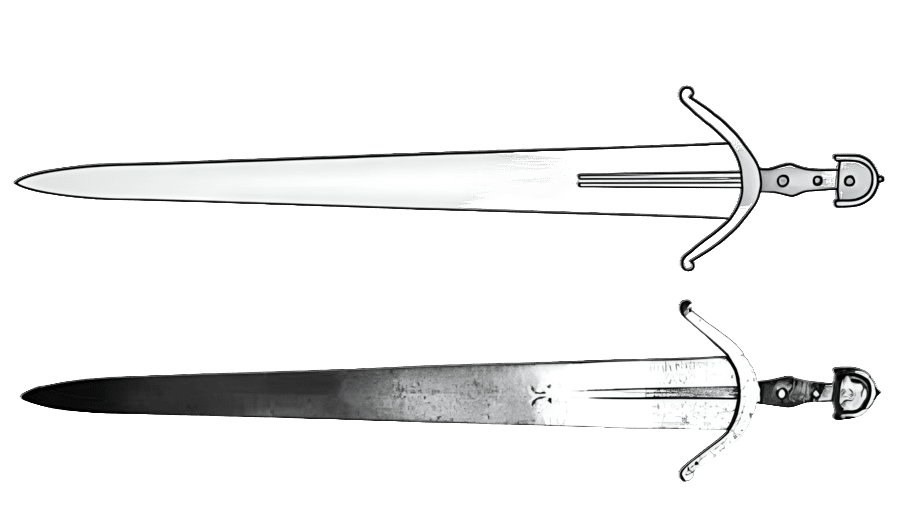
The Oakeshott type XXII is the last European medieval double-edged sword group in the updated 1991 version of Oakeshott’s Typology, Records of the Medieval Sword. In his previous work from 1964, this type would be inside the type XX or classified as a type XVIII in some cases. After further research and access to more materials, Oakeshott chose to categorize this type separately due to the time it was used and how the fuller blade feature stood out from others.

The type XXII was a transitional sword between the Late Middle Ages and the Early Renaissance. It was used during the mid-15th century through the end of the 16th century. It is one of the last large medieval sword holdouts that would transition into the later greatswords of the Renaissance.

Whether or not the XXII was a popular sword compared to the civilian type XXI is still being determined. It has been near impossible, even for Oakeshott, to find art or statues of the time.

The broad blade design is loosely based on the Italian Cinquedea dagger or shortsword but is also very similar to the Type XVIIIc cut and thrust sword. At the time of its use, however, plate armor wasn’t as consistent, and cut and thrust blades would have been necessary and effective, especially for everyday use. Oakeshott considers the massive examples of the type XXII to be bearing swords used for parades and ceremonies.
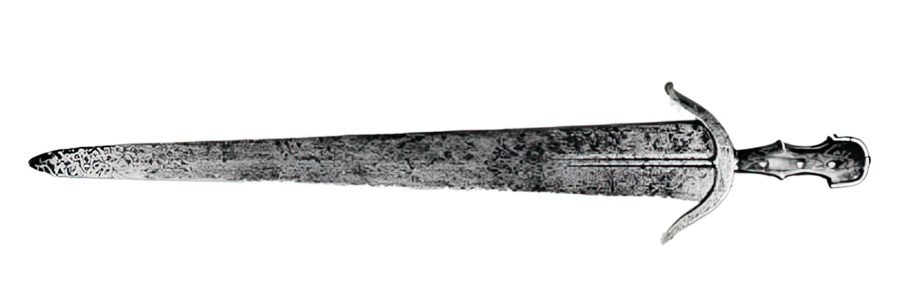
The type XXII could have originated in Northern Italy, but it spread through other parts of Europe, particularly in the regions of Germany. While some modern sword enthusiasts have a problem classifying it, as well as its low popularity in markets today, the Oakeshott type XXII is a very important historical link between the battlefield knightly sword and the later ceremonial civilian blades that could be simply decorative and used during the Renaissance.
